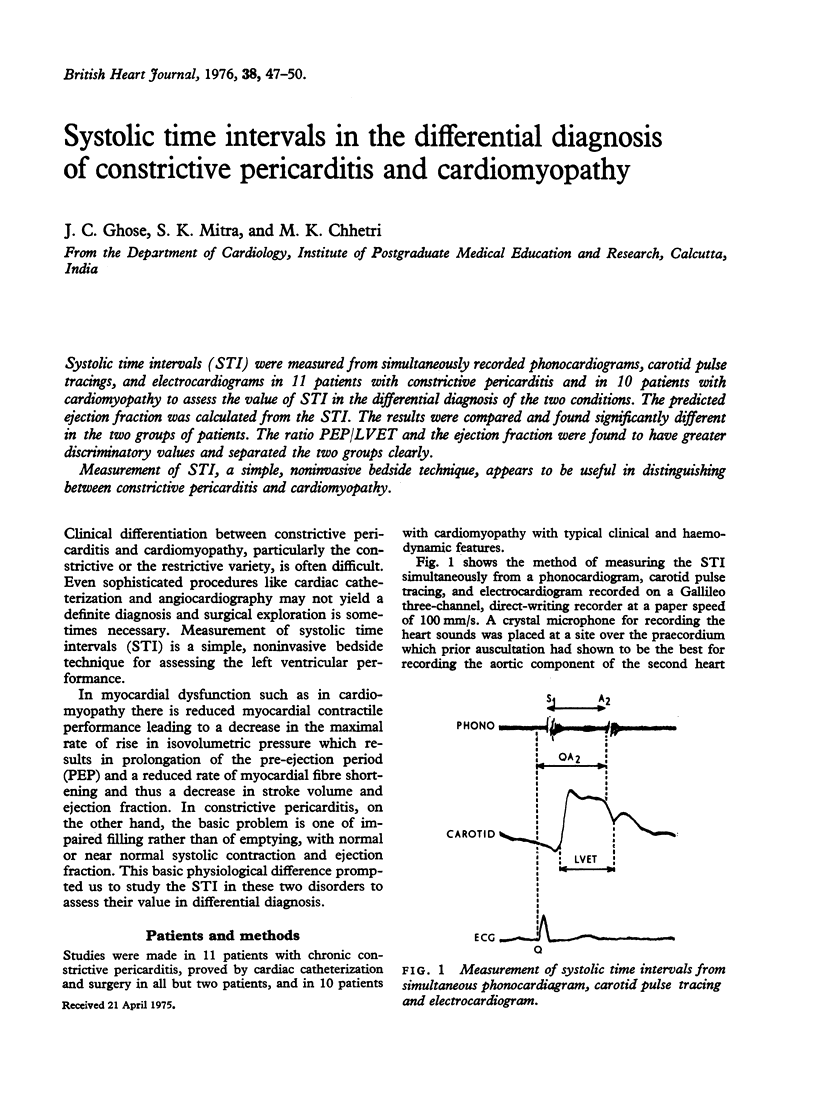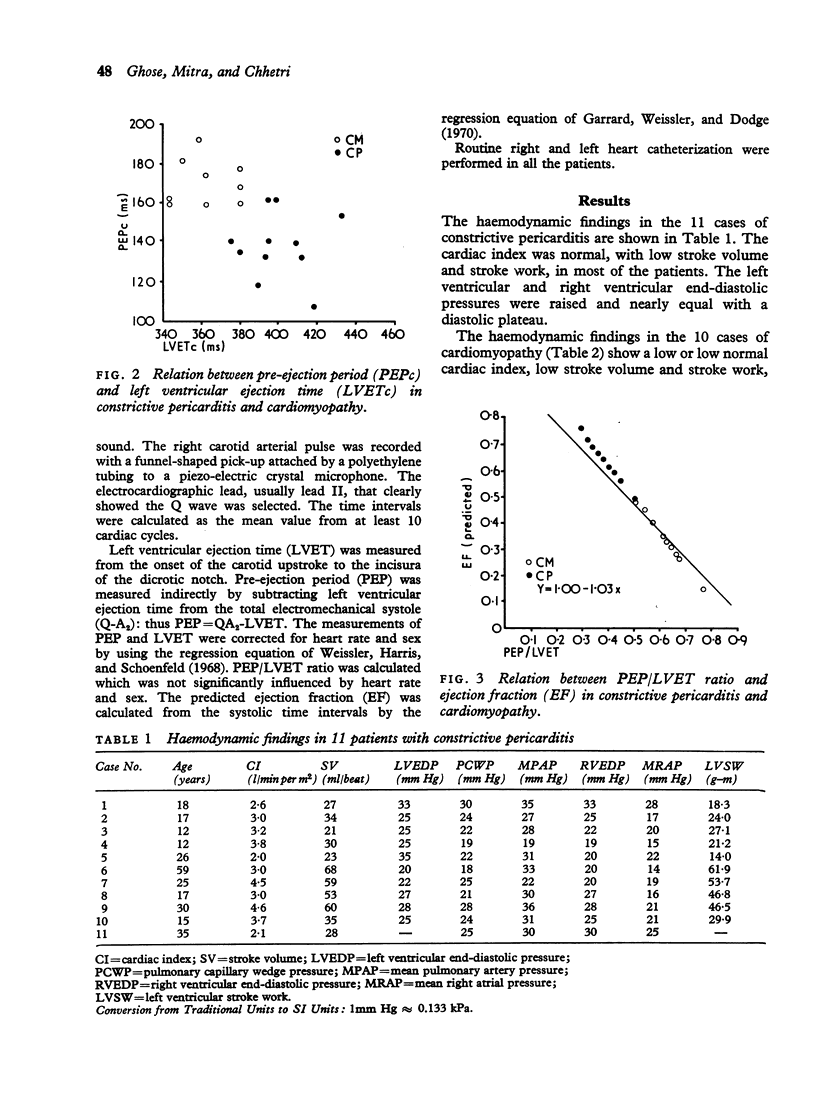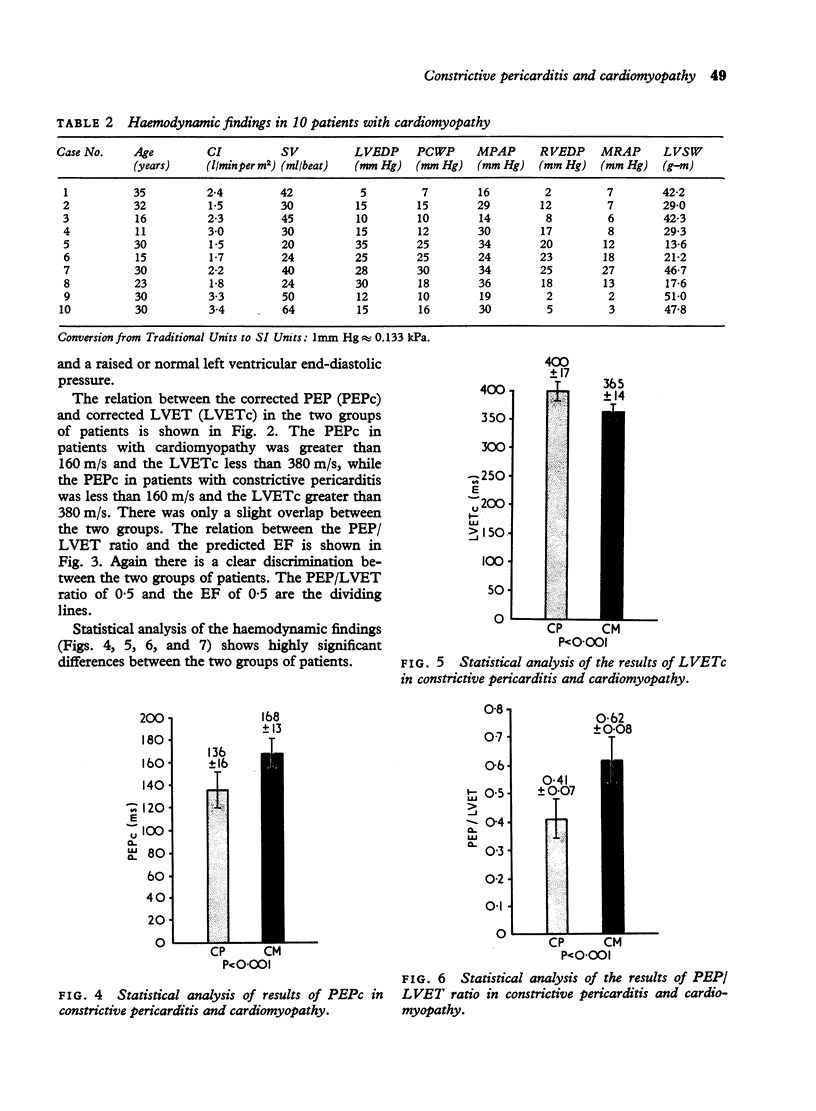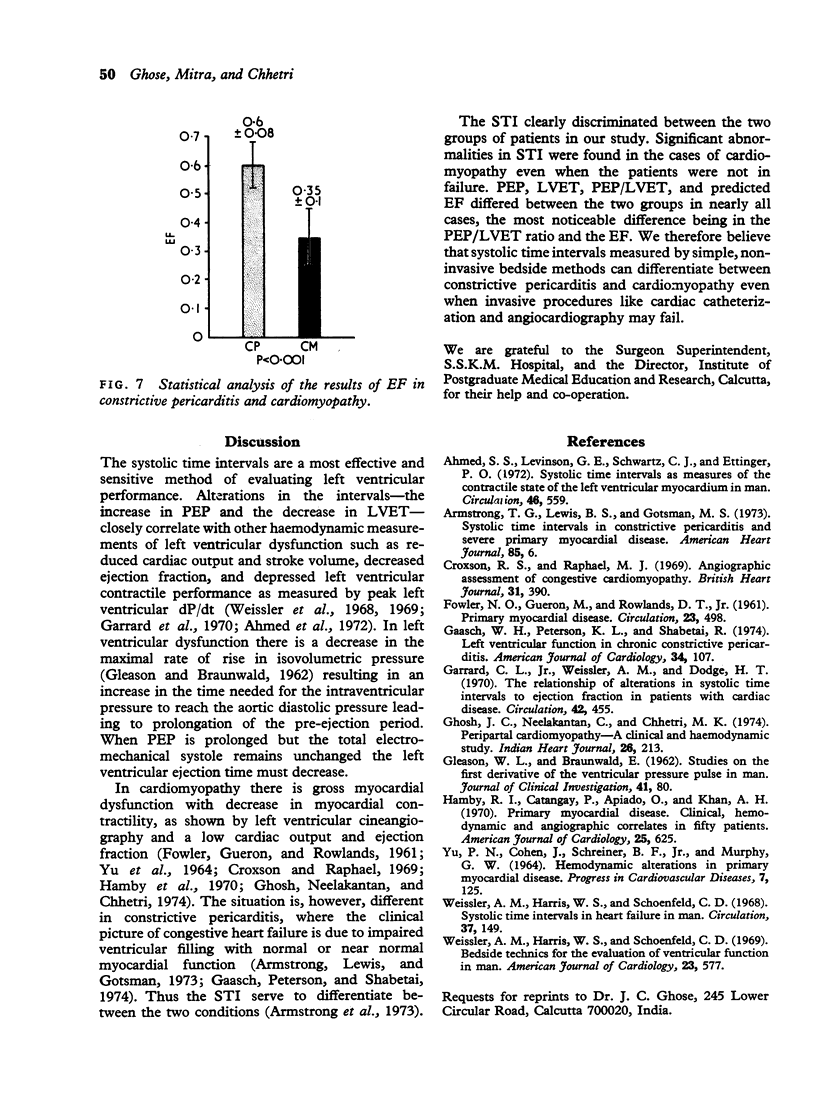Abstract
Systolic time intervals (STI) were measured from simultaneously recorded phonocardiograms, carotid pulse tracings, and electrocardiograms in 11 patients with constrictive pericarditis and in 10 patients with cardiomyopathy to assess the value of STI in the differential diagnosis of the two conditions. The predicted ejection fraction was calculated from the STI. The results were compared and found significantly different in the two groups of patients. The ratio PEP/LVET and the ejection fraction were found to have greater discriminatory values and separated the two groups clearly. Measurement of STI, a simple, noninvasive bedside technique, appears to be useful in distinguishing between constrictive pericarditis and cardiomyopathy.
Full text
PDF





